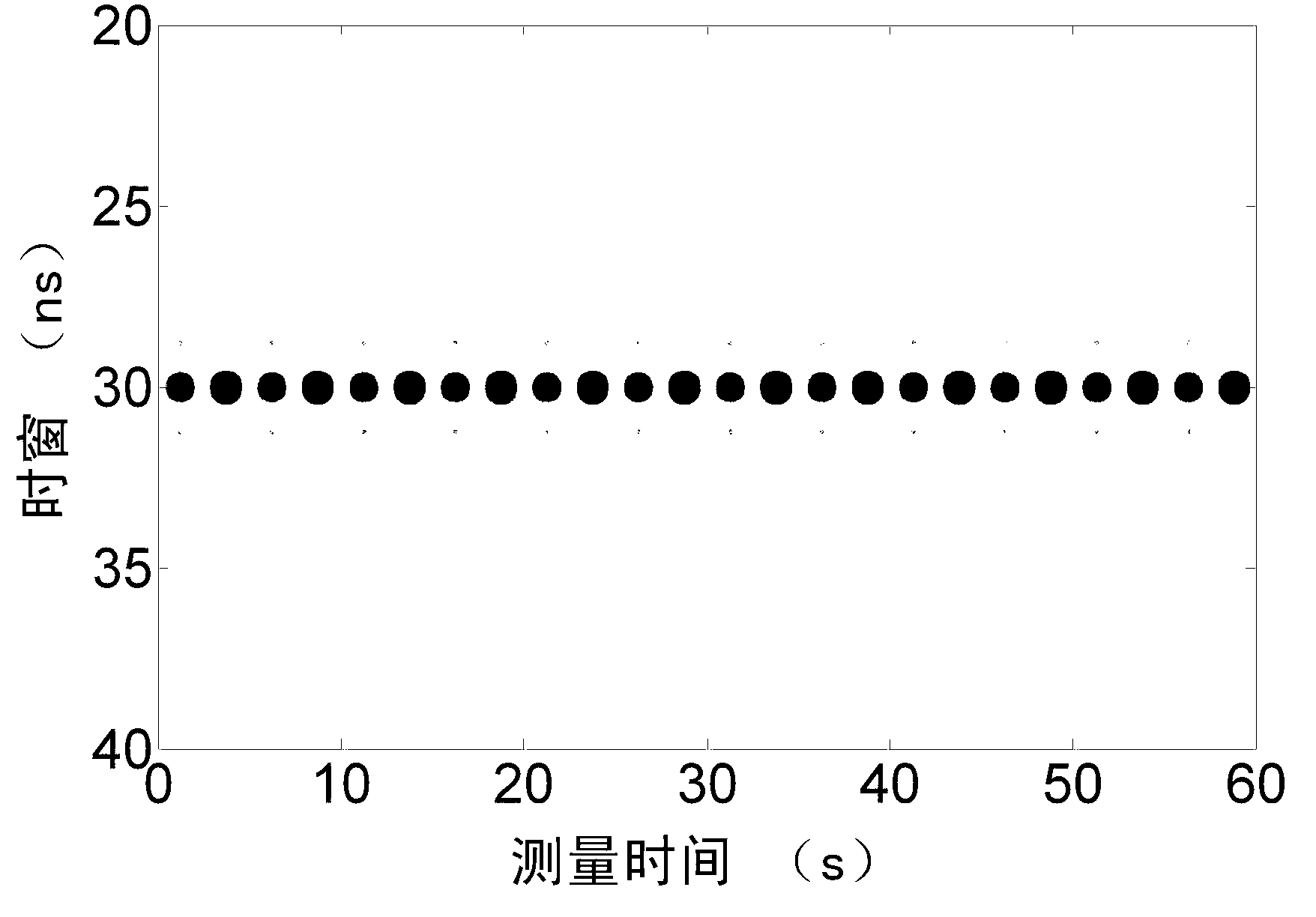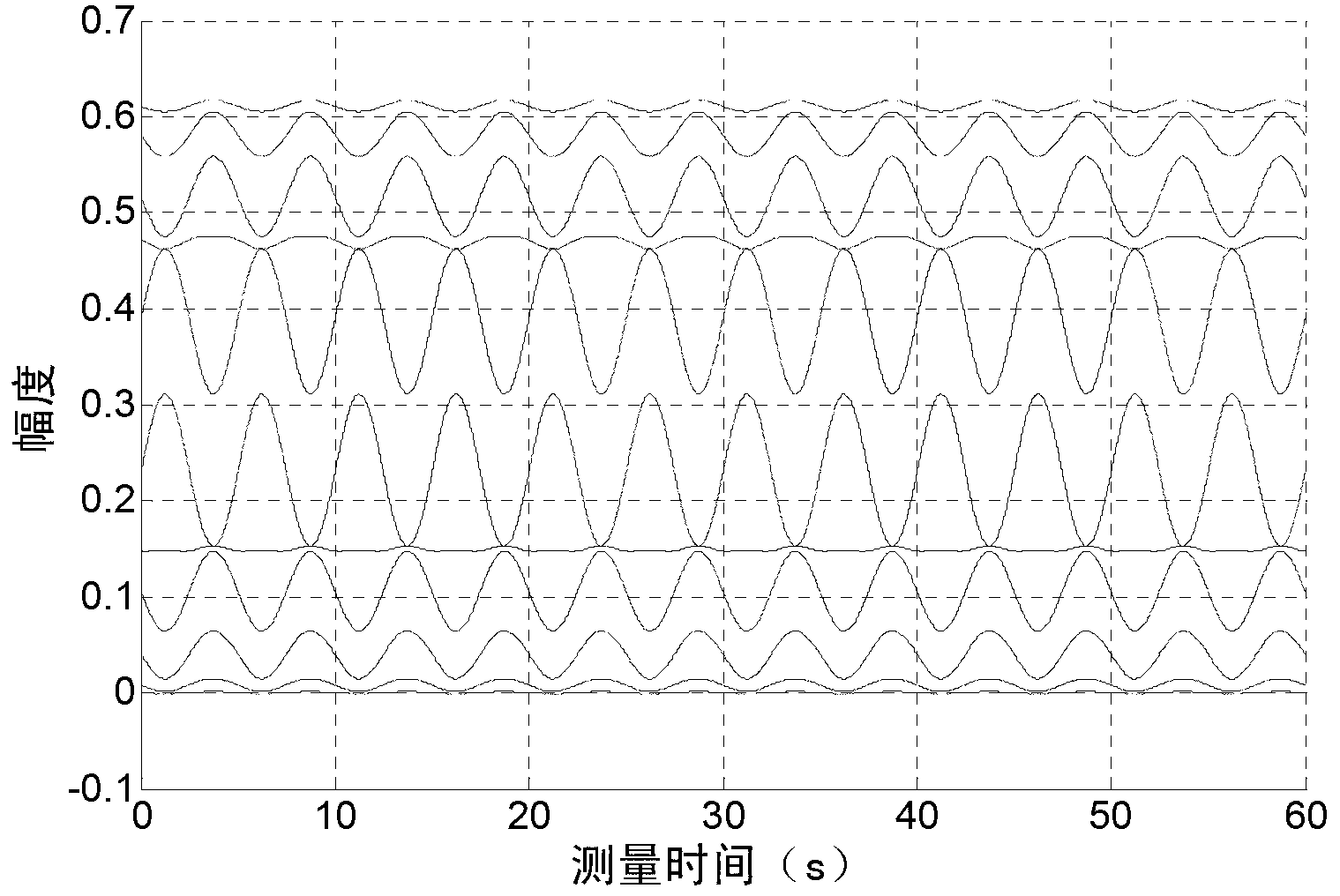Biological radar human body target identification method based on zero crossing point technology
A bio-radar and human-target technology, applied in the field of UWB bio-radar human-target recognition algorithm, can solve the problems of weak echo signal of bio-radar, increase the difficulty of echo signal processing, and difficulty in technical realization, and improve the penetration ability. Effect
- Summary
- Abstract
- Description
- Claims
- Application Information
AI Technical Summary
Problems solved by technology
Method used
Image
Examples
Embodiment 1
[0038] This embodiment briefly describes the UWB bio-radar detection algorithm and features of human breathing:
[0039] Impulse pulse UWB biological radar adopts equivalent sampling technology, which can realize the detection within the set distance range. Since the distance information is measured by the delay between sending and receiving pulses, this distance range is usually called the time window of UWB biological radar. Continuously scan and measure the echo signals in the time window at a certain speed to obtain two-dimensional UWB biological radar echo signals and convert them into discrete data to meet the needs of storage and processing.
[0040] figure 1 It is a set of UWB biological radar echo data. The horizontal axis is the measurement time, and the unit is usually s; the vertical axis is the time window, which represents the delay of the UWB pulse echo, and the unit is usually ns, which can be converted into distance according to the pulse propagation speed. ...
Embodiment 2
[0045] This embodiment describes in detail the UWB bio-radar human target recognition algorithm based on zero-crossing technology:
[0046] Such as Figure 4 As shown, the algorithm includes four steps: zero-crossing point extraction, time-domain accumulation, signal-to-noise ratio estimation, and threshold judgment: zero-crossing point extraction realizes the quantification of UWB bioradar detection of human breath zero-crossing point characteristics, and time-domain accumulation compares the zero-crossing point in time The extraction results are accumulated to reduce the misjudgment caused by accidental factors; the signal-to-noise ratio is estimated to be used as a quantitative index for human target recognition; the threshold is set for the quantitative index to judge and finally realize the automatic recognition of human target.
[0047] 3.1 Zero-crossing extraction
[0048]For the convenience of analysis, the figure 2 Expand according to the measurement time, take mul...
Embodiment 3
[0071] This embodiment evaluates the effectiveness of the above algorithms:
PUM
 Login to View More
Login to View More Abstract
Description
Claims
Application Information
 Login to View More
Login to View More - R&D
- Intellectual Property
- Life Sciences
- Materials
- Tech Scout
- Unparalleled Data Quality
- Higher Quality Content
- 60% Fewer Hallucinations
Browse by: Latest US Patents, China's latest patents, Technical Efficacy Thesaurus, Application Domain, Technology Topic, Popular Technical Reports.
© 2025 PatSnap. All rights reserved.Legal|Privacy policy|Modern Slavery Act Transparency Statement|Sitemap|About US| Contact US: help@patsnap.com



